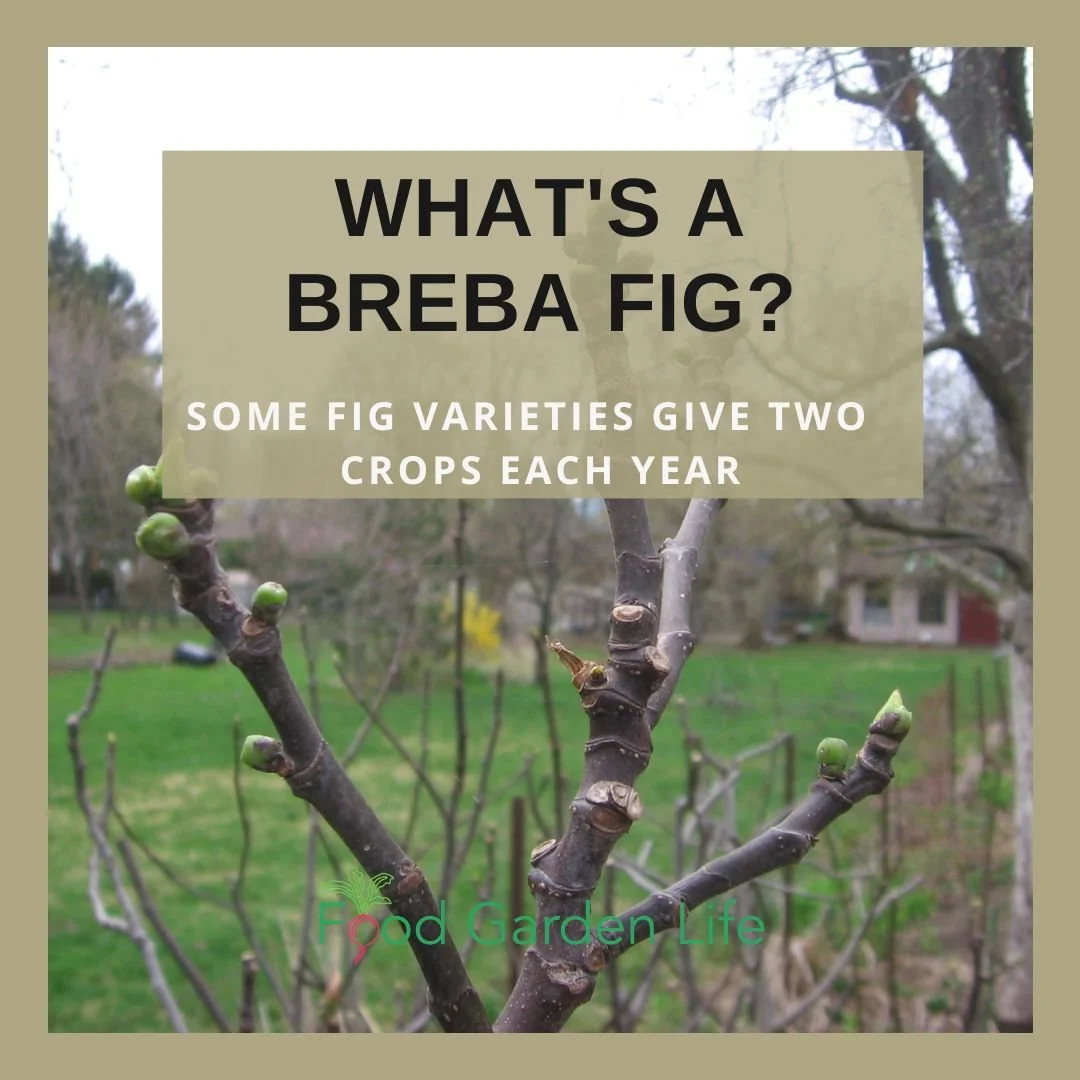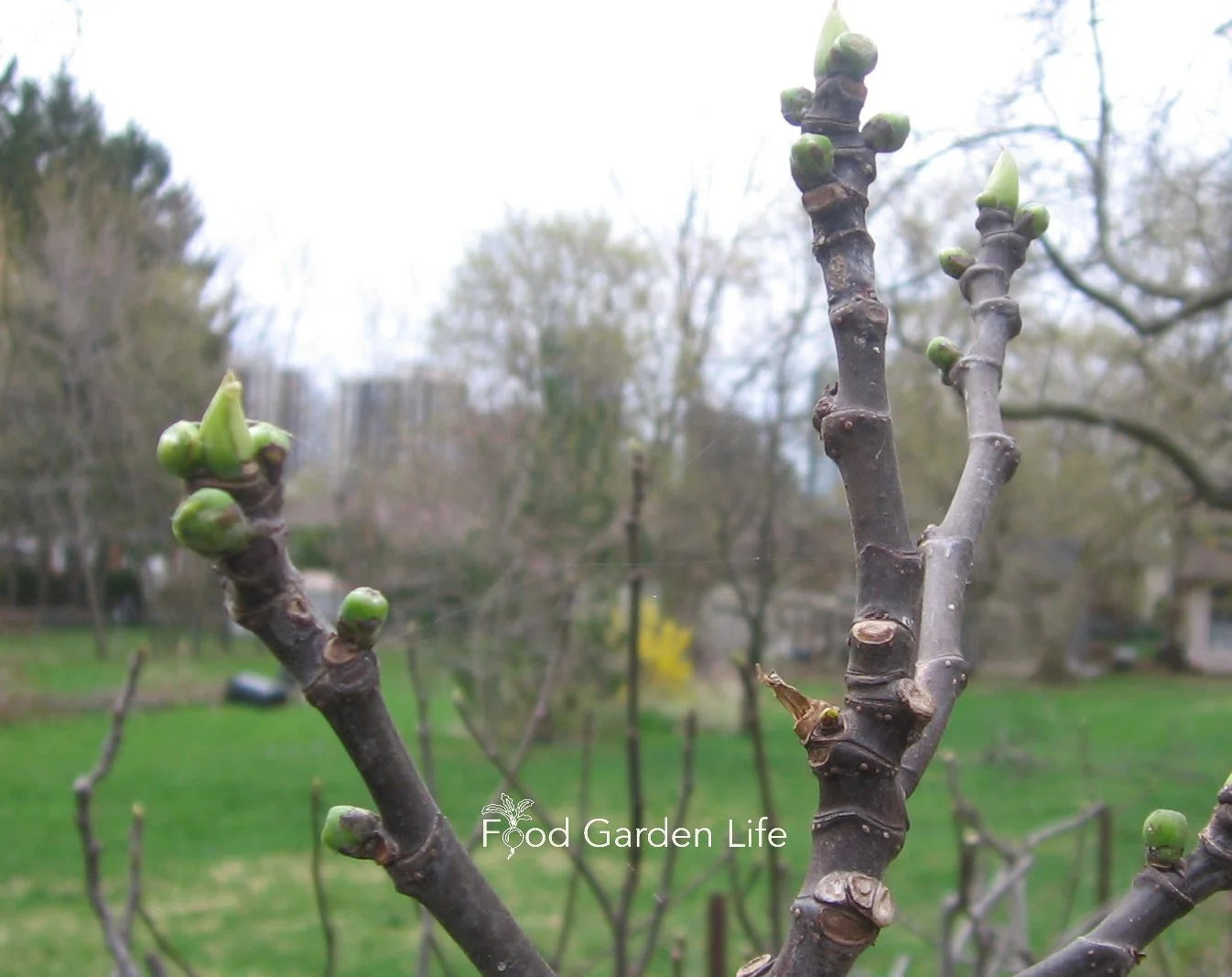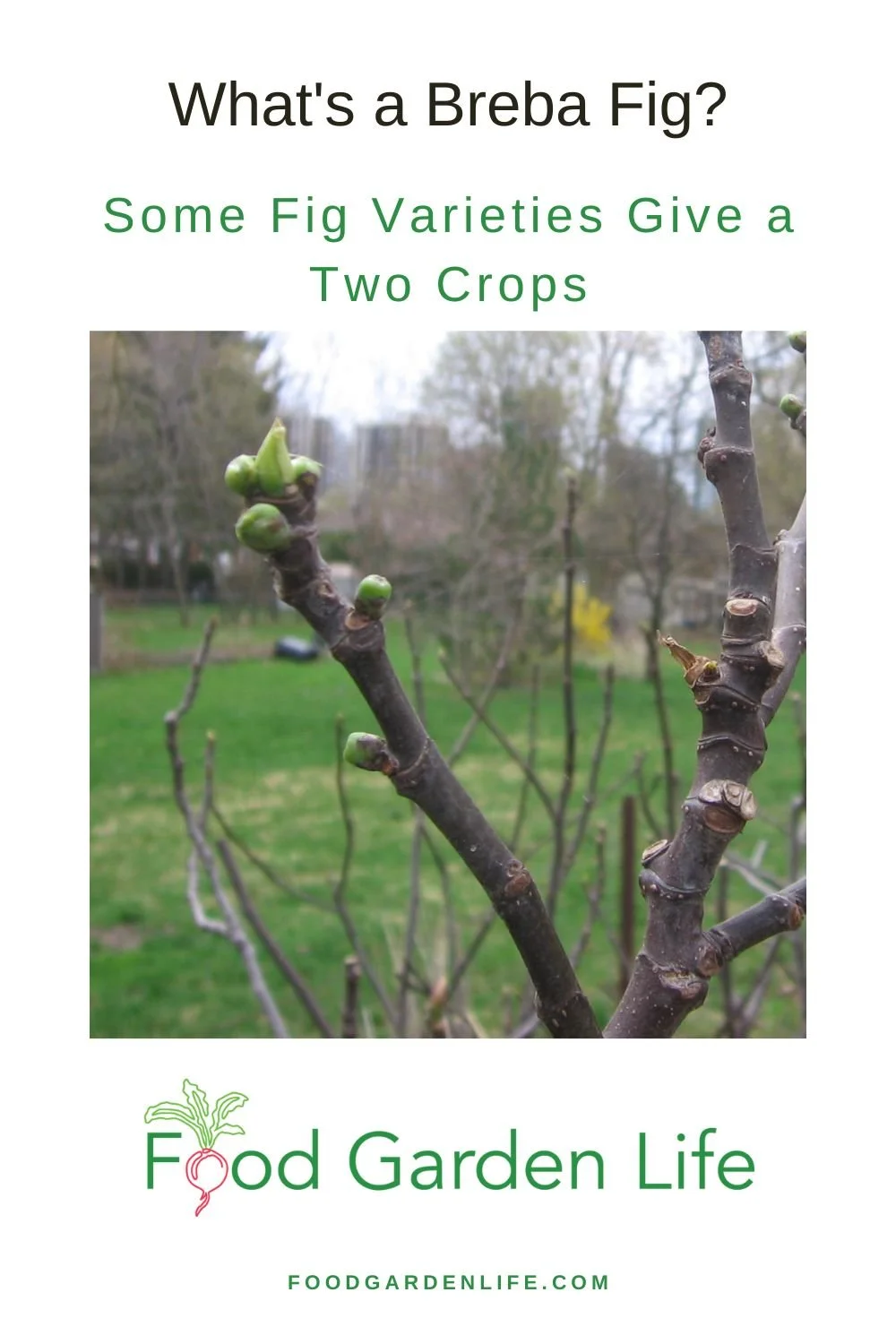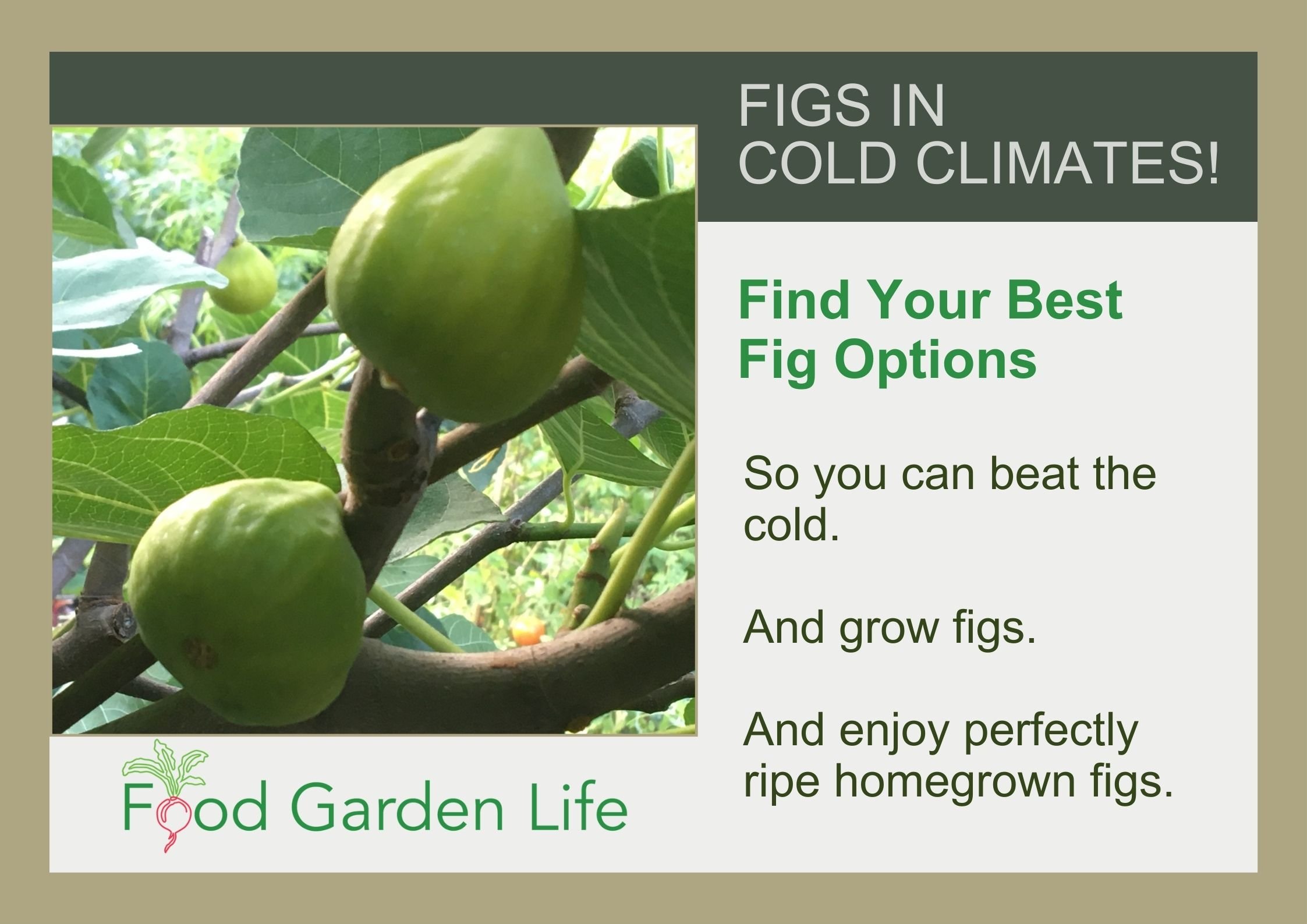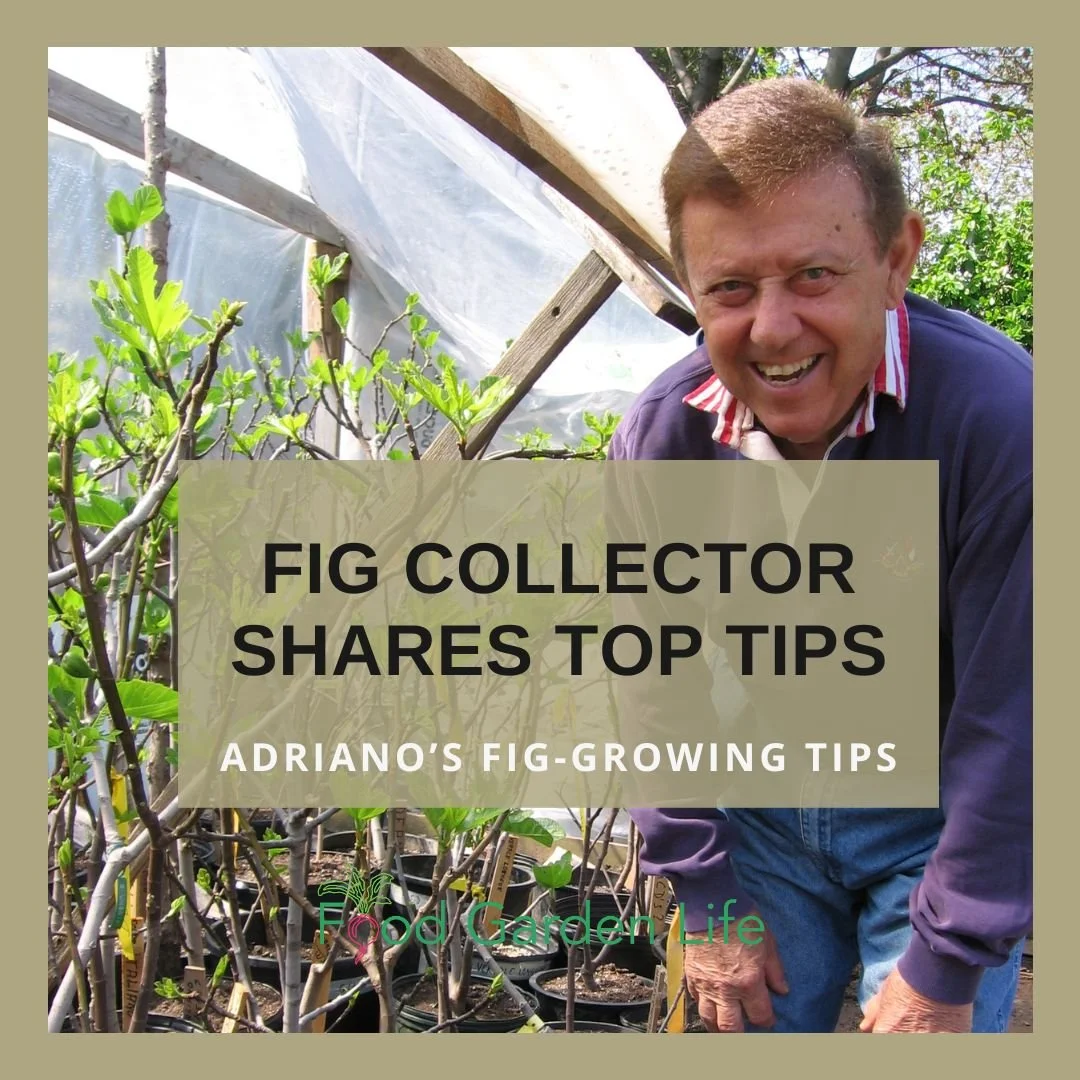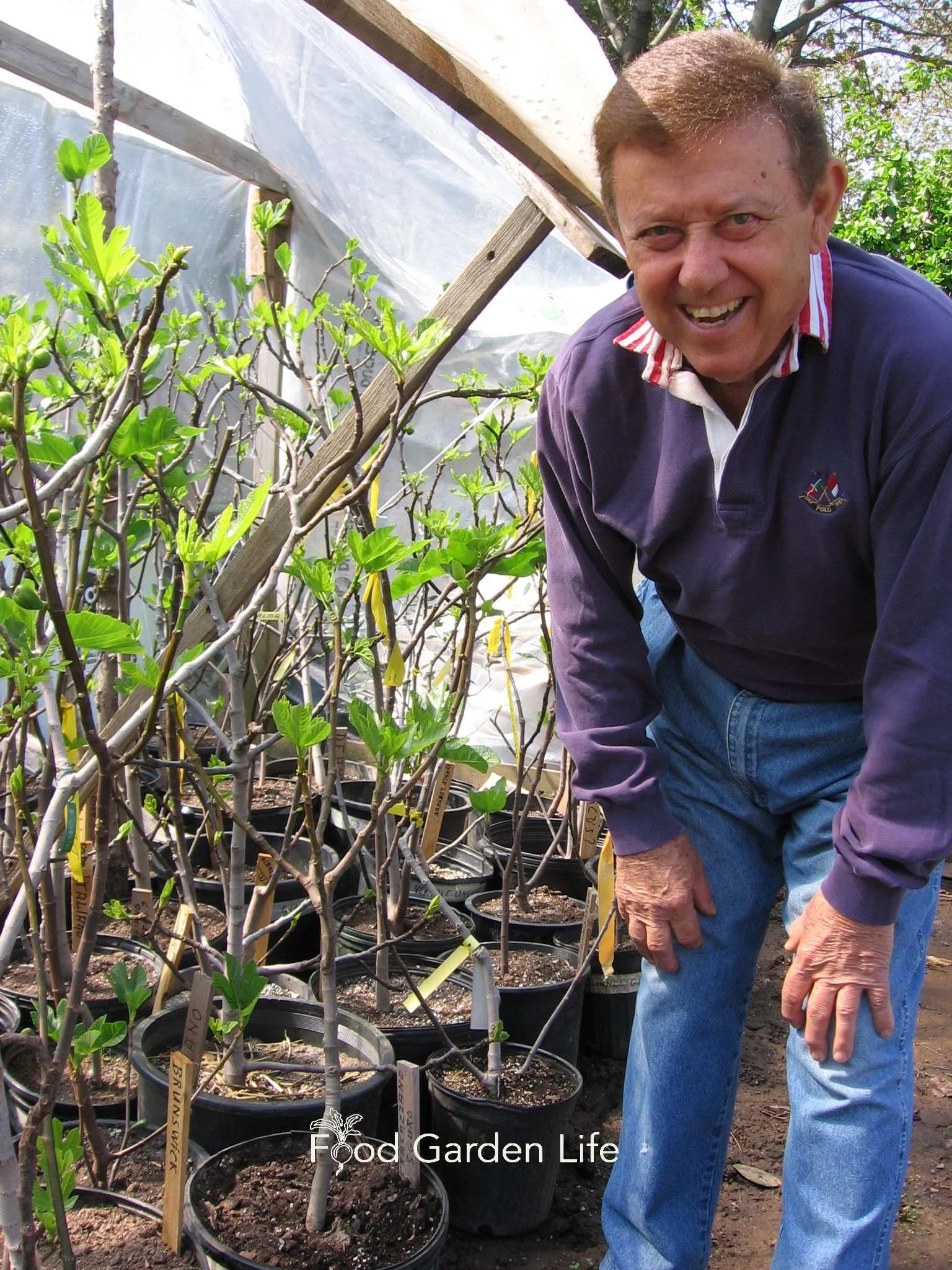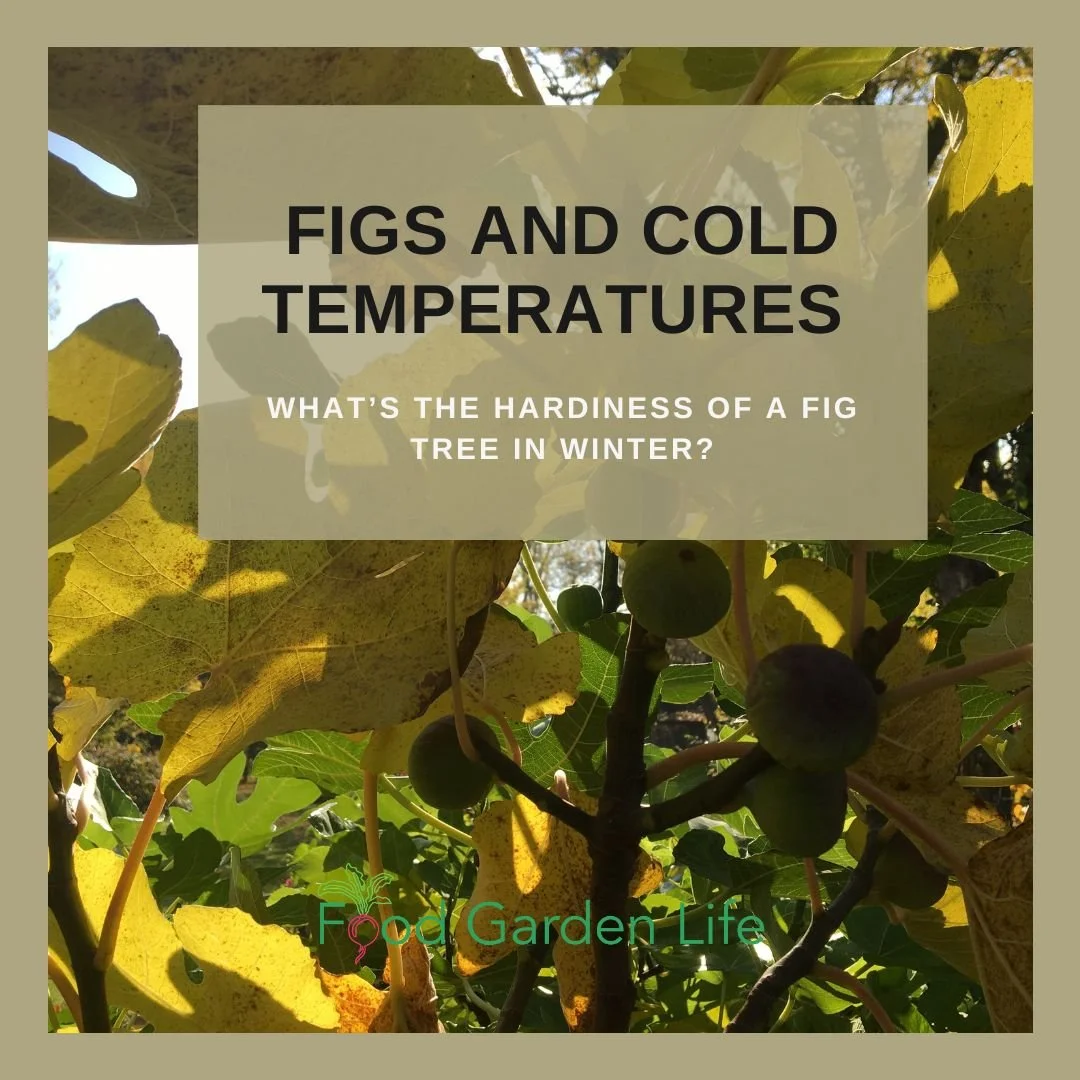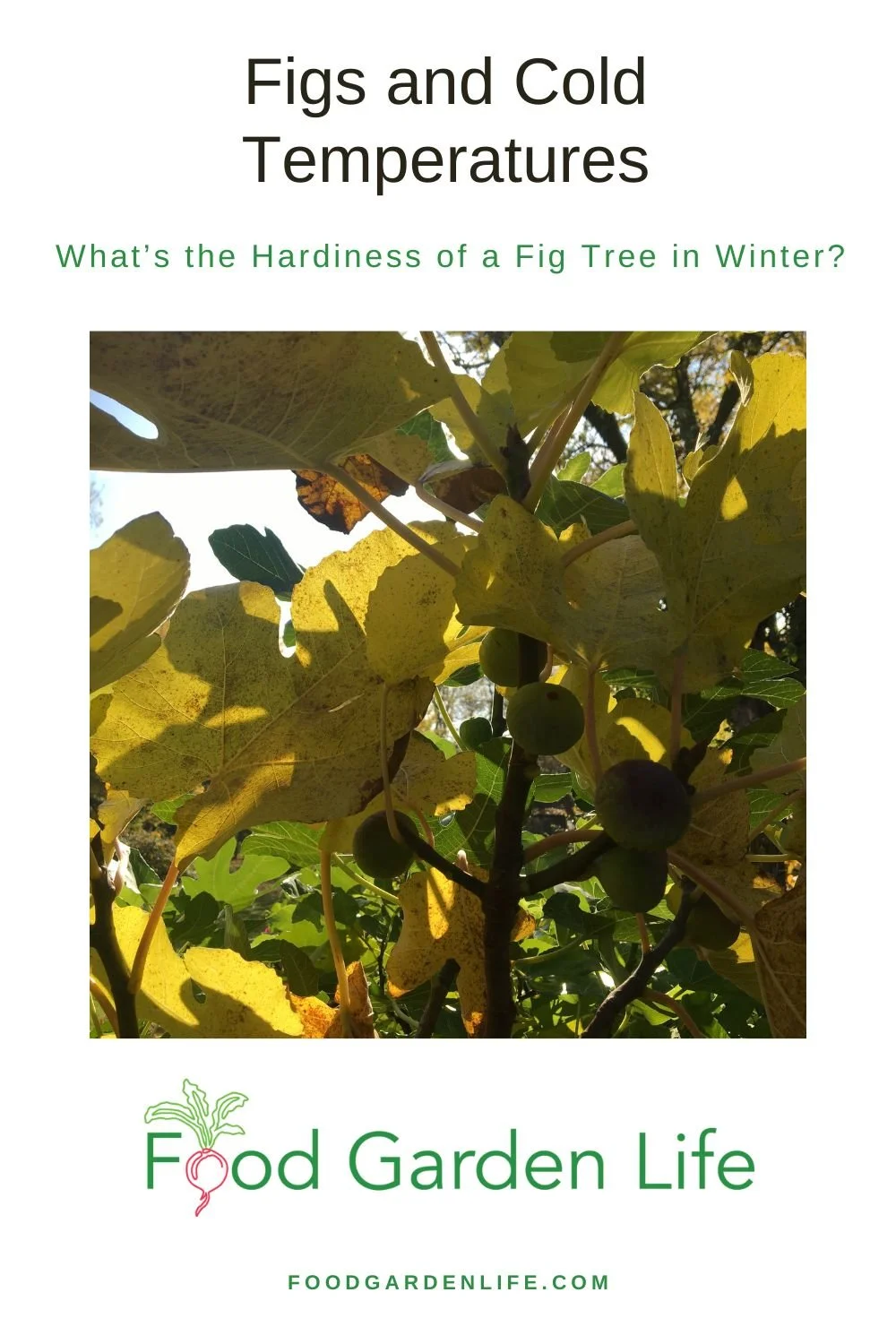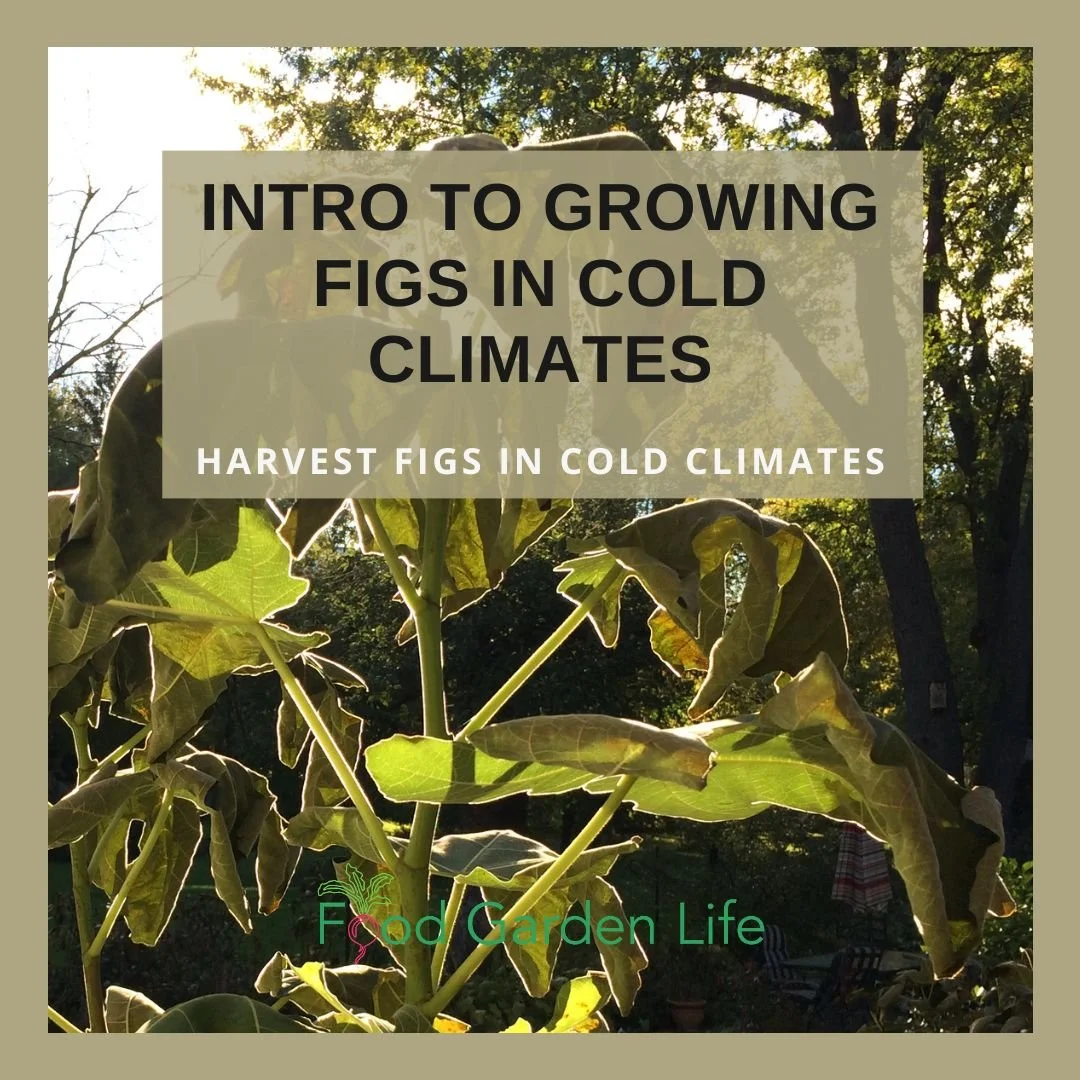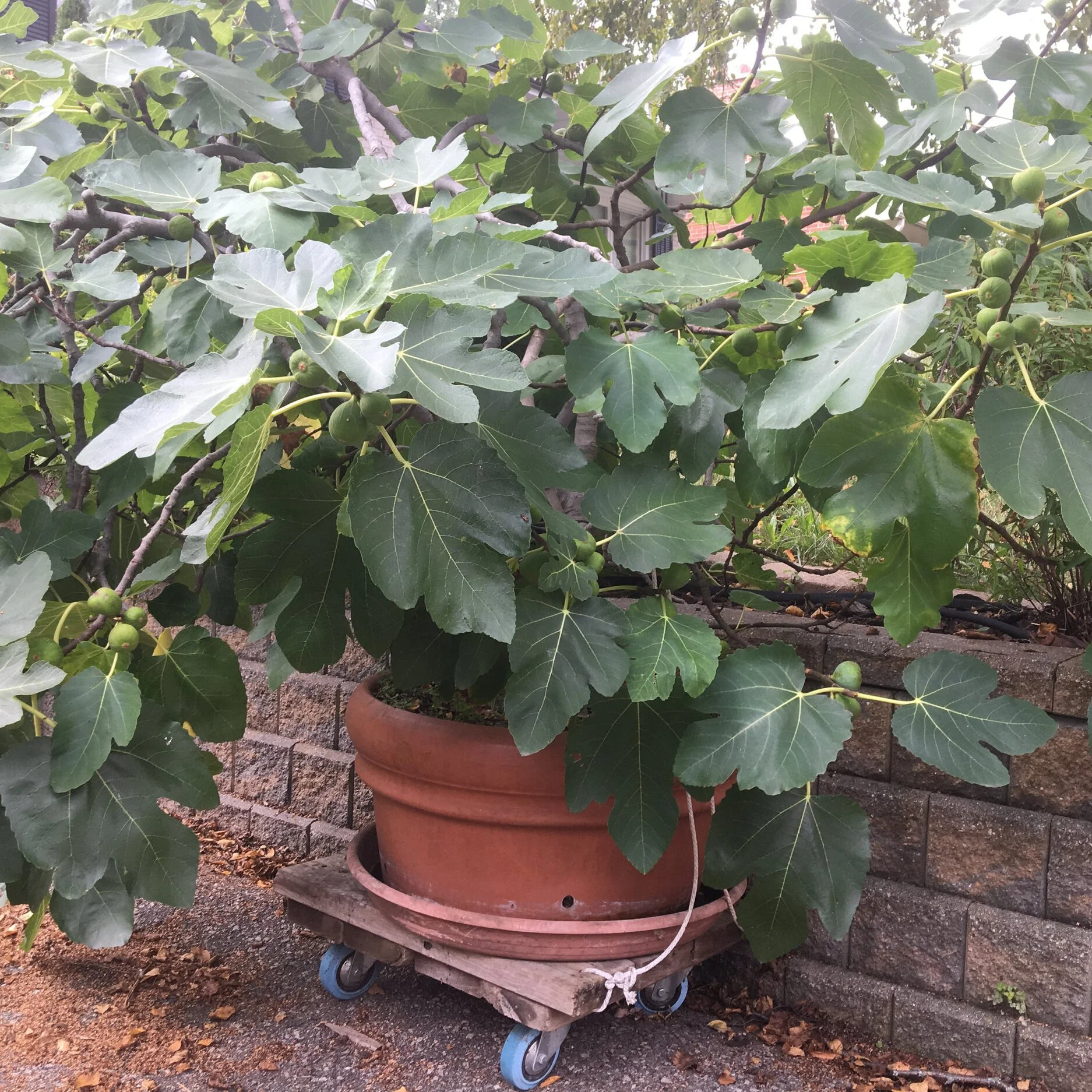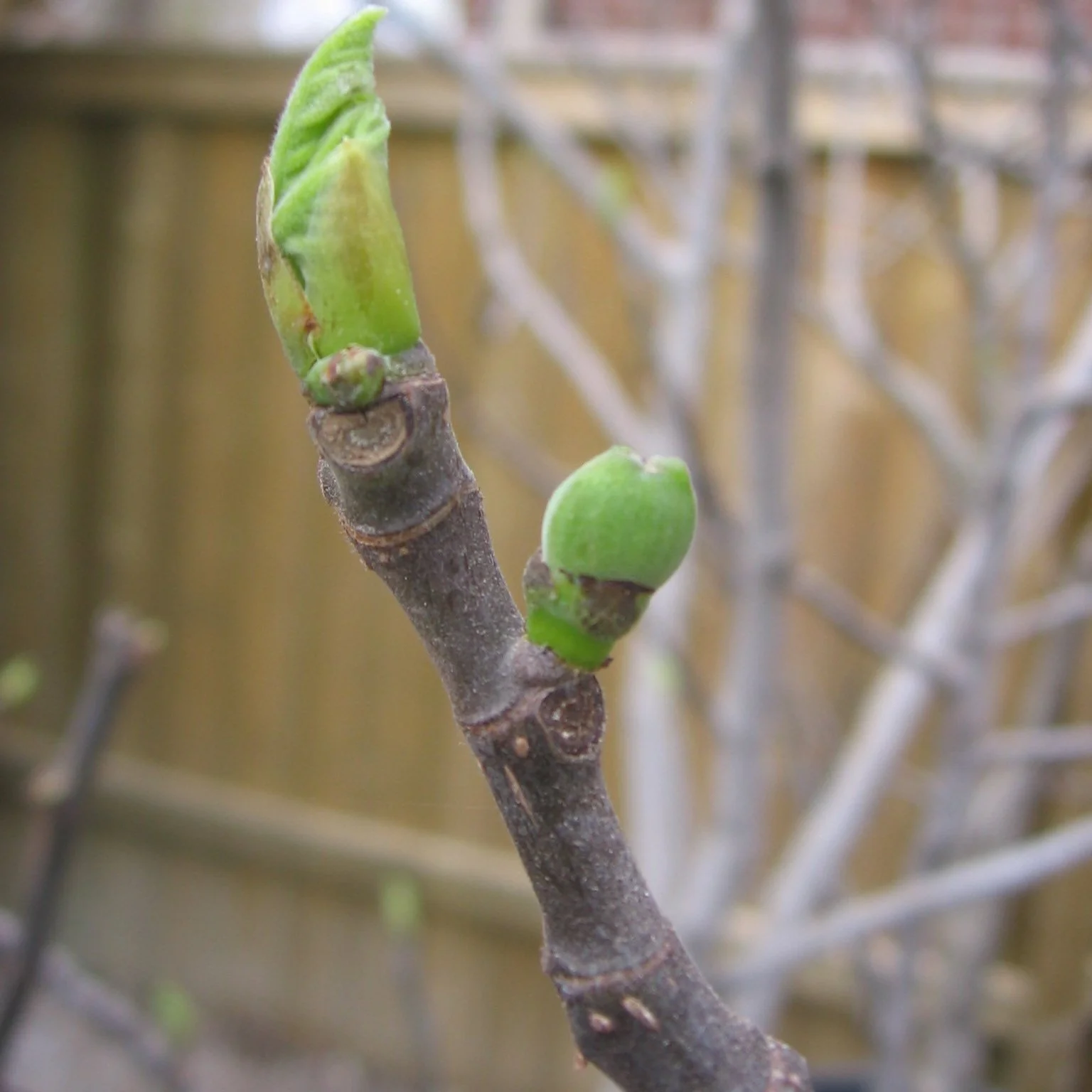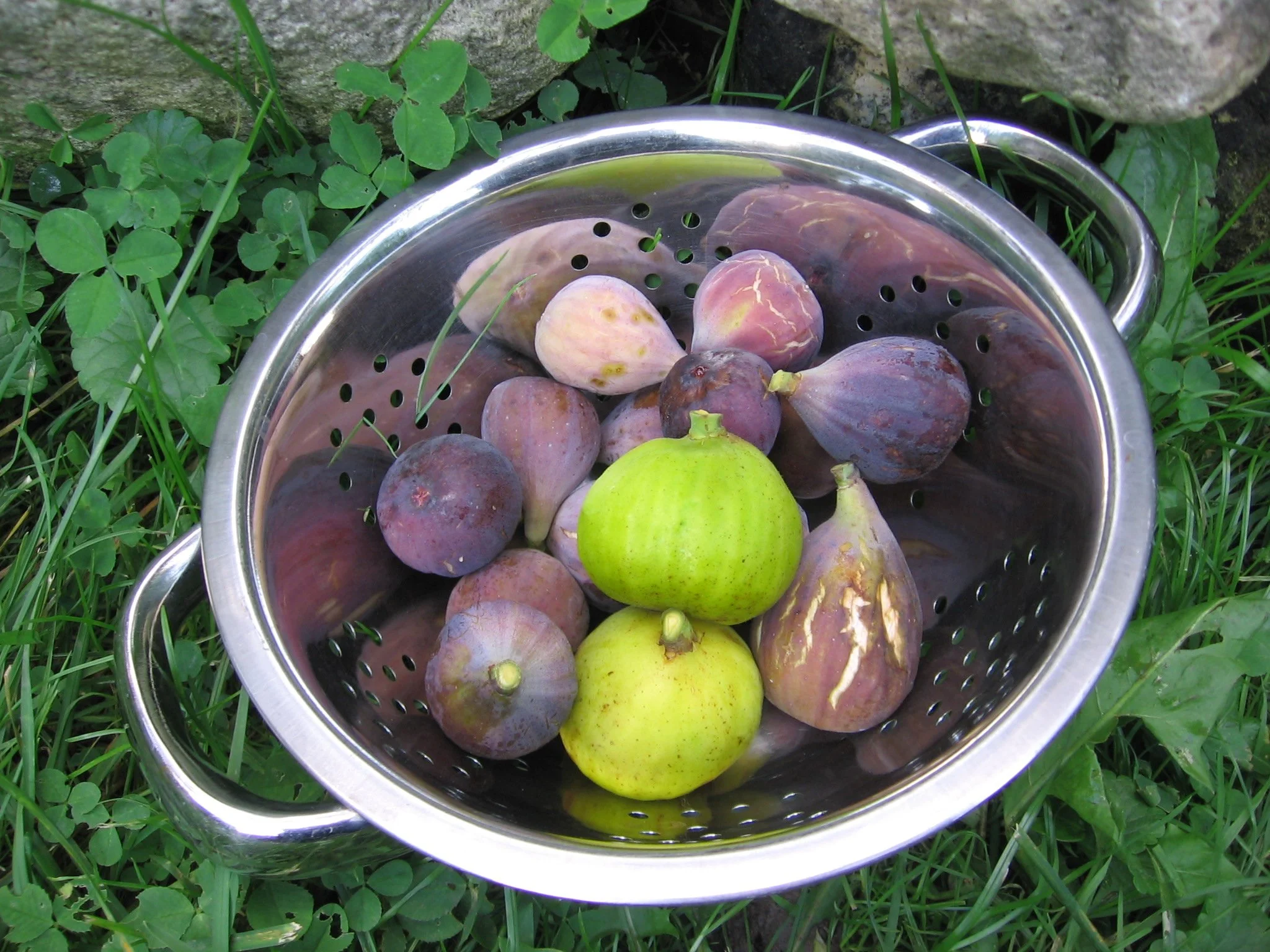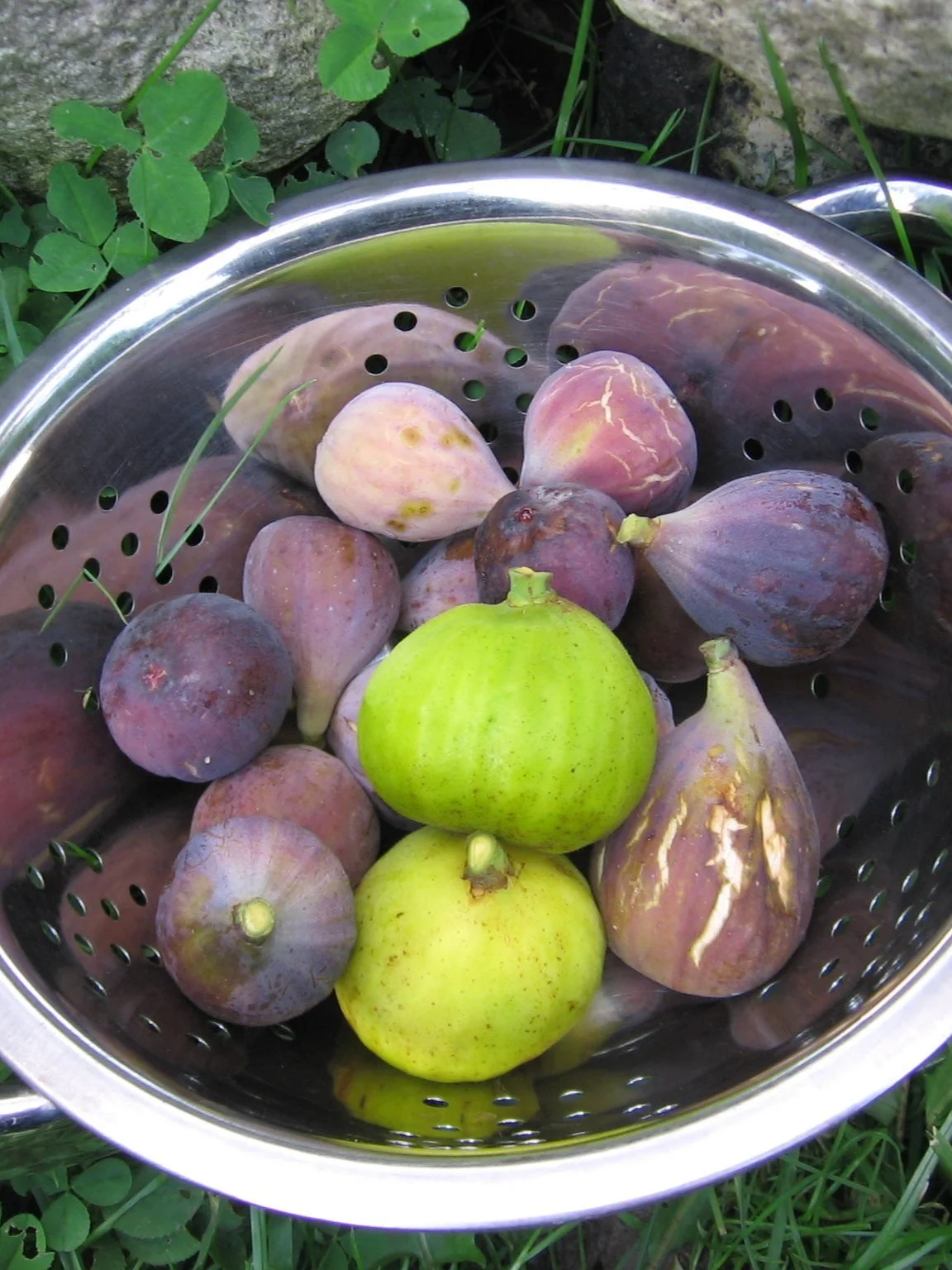Early Figs? Harvest a Breba Crop of Figs Mid-Summer
The difference between breba and main-crop figs.
By Steven Biggs
Some Fig Varieties Produce a Breba Crop—an Early Crop
Wondering why some fig trees have ripe fruit mid summer, while other only have ripe figs in the fall?
That’s because some fig tree varieties produce two crops each year:
The “breba” crop grows on wood from the previous year, and it’s the first to ripen
The “main crop” grows on wood from the current year, and it ripens later
Here in Toronto, my breba figs starts to ripen some time in July.
And the main crop figs are usually ready starting in late September.
If you want to know more about breba figs, and how to benefit from this early crop, keep reading.
Breba, Main Crop, or Both…it Depends on the Variety
Some fig varieties produce both breba and main-crop figs (called “biferous” fig varieties)
Some varieties have no breba figs—only main-crop figs (called uniferous” varieties)
Some varieties only give a breba crop in cold climates (there’s a story here…see below about San Pedro figs)
San Pedro Figs
The figs that ripen only a breba crop in cold climates do grow a second, main crop.
But it doesn’t mature.
That’s because this second crop requires a pollinator (a little wasp that’s found in warmer, commercial fig-producing regions.) An example of a San Pedro fig is the variety Desert King (see below.)
Grow a Breba Crop to get Early Figs in Cold Climates
If you're growing figs in a cold climate, you don’t have to wait for main-crop varieties to ripen in late summer.
To get an earlier, mid-summer fig harvest, grow a fig variety that gives a reliable breba crop.
The photo below shows a fig breba crop forming in the spring, before any leaves are out!
Fig breba crop starting to grow even before any leaves have emerged.
Get Your Fig Trees Through Winter
And eat fresh homegrown figs!
Do You Get Cool Summers?
Protect branches from winter dieback to get a good production of breba figs.
Here in Toronto the winters can get cold—but summers are usually hot. So my main-crop figs ripen.
But I still like to have fig varieties that produce a heavy breba crop. Here’s why:
I grow fig varieties with a good breba crop for an early harvest
I grow other varieties for main-crop figs later in the season.
But in areas with cool summers, there might not be enough heat to ripen main-crop figs.
For example, gardeners in the Pacific Northwest rely on varieties with a heavy breba crop because there is not always have enough summer heat to ripen main-crop figs.
Find out how gardeners in areas with cool summers can ripen figs.
Maximize Breba Fig Yield
Remember Breba Figs as You Prune
Things to think about as you prune for a good breba crop:
Prune back some of the 2-year-old branches when the fig tree is dormant
These 2-year-old branches made breba figs the previous season…and if you leave them they’ll still make breba figs, but now those breba figs will be on the new growth, up high and out of your reach (where the birds can get them!)
Cut these 2-year-old branches back, leaving about an inch of the branch remaining where they meet a larger branch (then there’s a nub of wood from which a replacement will grow for the following year.)
Leave lots of one-year-old branches as these are the ones that will give you breba fruit
Find out more about how to prune a fig tree.
Minimize Dieback of Branches
Pin this post!
In cold areas unprotected branches can die back when exposed to cold temperatures. Plants regrow from the base…but it’s the branches from the previous year that grow the breba figs.
If you want breba figs, minimize winter dieback by moving potted plants indoors, or protecting in-ground plants.
Here are ideas to protect fig trees in winter.
FAQ Fig Breba Crop
What’s a good fig variety for a breba crop?
I’m a big fan of ‘Desert King.’ I grow a large Desert King in the ground here in Toronto. I tip it over and lay it flat to the ground every winter. It’s absolutely prolific.
There are other excellent fig varieties for the breba crop. Find out about more breba figs.
Do breba figs look the same as main-crop figs?
Not always. The breba figs might look very different from the main-crop figs of the same variety. They can differ in:
Colour
Shape
Size
Taste
Find This Helpful?
If we’ve helped in your food-gardening journey, we’re always glad of support. You can high-five us below! Any amount welcome!
More on How to Grow Figs
More Fig Articles
Head back to the fig home page to search for fig articles by topic.
Fig Books
Fig Masterclass
The self-paced online fig masterclass gives you everything you need to know to grow and harvest your own figs in a cold climate!
Fig Trees in Canada: Ontario Fig Collector Shares Top Tips
Ontario fig collector Adriano Ferreira’s top fig-growing tips.
By Steven Biggs
Tips for growing figs in Southern Ontario and beyond, from Adriano Ferreira.
Adriano’s Fig-Growing Tips
In 2009, I wrote an article for Edible Toronto magazine featuring two “fig fetishists” here in Southern Ontario, Adriano Ferreira and Peter Vicano.
In a follow-up chat with Adriano—my fig mentor—I asked him to give me his top fig-growing tips so I could share them here.
He said he’d only share if I spoke to him in Portuguese. I managed to say, “bom dia,” and that was about it! He graciously shared these tips.
If you’re wondering how to take care of a fig tree in Southern Ontario—in any cold climate—keep reading for Adriano’s tips.
Adriano Ferreira’s Top Tips
Soil for Fig Trees
Ferreira’s preferred soil for fig trees contains of one-third peat-based potting mix, one-third composted manure, and one-third compost, with some added perlite, dolomitic limestone, and vermiculite.
Adriano Ferreira shared his top fig-growing tips with me
Repotting Fig Trees
Repot fig trees every three to five years, drilling extra drainage holes along the bottom couple of inches of the pot.
Watering and Feeding Figs
During the summer, potted figs need lots of water, but when dormant or growing slowly, over-watering is the most common cause for fig trees dying.
If water doesn’t soak into a rootbound potted fig tree, insert a large nail into the soil, then fill the resulting hole with sand. This makes a channel for water to enter the root ball.
For feeding fig trees, Ferreira uses manure tea and fruit or tomato fertilizer.
Get Your Fig Trees Through Winter
And eat fresh homegrown figs!
Pruning Fig Trees
Train side shoots to grow horizontally, which encourages fruit formation.
Grow in the form of multi-stemmed fig bushes instead of trees for ease of maintenance and increased fruiting.
Here’s a guide to pruning fig trees.
Fig Ripening and Harvest
Embryonic figs are formed in late summer and carried through winter on dormant branches as bumps. These swell in spring with warm temperatures. Be careful of frost, which can damage the little figs once they begin to grow.
In September, remove fig fruit that are too small to ripen, redirecting energy to those that will.
Harvest when soft and the skin shows the impression of your fingerprint. Figs wilt at the neck and droop under their own weight. Splits and cracks often appear when ripe. If you pick figs too early you’ll see white sap.
Find out how to ripen figs faster in this this fig-ripening guide.
Overwintering Fig Trees
Pick off any fruit remaining after leaves drop off in the fall. These unripe figs will not ripen.
Bend down boughs of in-ground, multi-stemmed trees, then build an A-frame of wood and Styrofoam over the top. See a picture of Adriano’s A-frame in this article about fig tree winter protection.
For potted trees, lay pots on their side in wooden boxes (2-inch wide boards, forming a wall 12 to 18 inches high.) Cover the top with plywood, Styrofoam, and a tarp.
In partially heated area such as sunrooms, water only occasionally. Dormant figs don’t require light.
Find This Helpful?
If we’ve helped in your food-gardening journey, we’re always glad of support. You can high-five us below! Any amount welcome!
More on How to Grow Figs
More Fig Articles
Head back to the fig home page to search for fig articles by topic.
Fig Books
Fig Masterclass
The self-paced online fig masterclass gives you everything you need to know to grow and harvest your own figs in a cold climate!
Figs and Winter Temperatures
Find out what you need to know about fig hardiness and winter temperatures so you can figure out what sort of winter protection (if any) your fig trees need.
What’s the Hardiness of a Fig Tree in Winter?
Fig plants tolerate more cold than many people realize.
But just how cold can they get without damage?
It depends on a few different things.
This article tells you what you need to know about fig hardiness and winter temperatures so you can figure out what sort of winter protection (if any) your fig trees need.
(If you already have an idea of how hardy fig trees are in your area and just want ideas to get them through the winter, find out more here.)
Hardiness Isn’t Exact
Hardiness is never an exact thing.
That's because fig tree hardiness is affected by what's going on with the tree—and it's also affected by the conditions around the fig tree.
The cold hardiness of fig trees is affected by what's going on with the tree:
Young trees are more tender than mature trees
Fruit and new growth are affected by cold before older, woodier stems
If the fig tree is dormant, it can better withstand cold
Some fig varieties are more cold-tolerant than others
The conditions the fig tree is exposed to also affect cold hardiness:
The duration of cold temperatures
How sheltered or exposed the fig tree is
How many degrees the temperature drops
The timing of extreme cold (e.g., at the end of the night the plant might be soon warmed by sun)
Get Your Fig Trees Through Winter
And eat fresh homegrown figs!
So How Much Cold Can Fig Trees Take?
There is no magical number. Some fig plants can take temperatures as cold as -7 to -9°C (15-20°F).
Some colder.
Some not so cold…
If you want to think in terms of zones, you’ll often see the recommendation that figs are hardy into USDA Zone 8. But you can push the growing zone recommendations if you figure out a way to moderate temperature extremes around your fig plant over the winter.
Even if a cold winter causes the top of a fig tree to die back, the roots usually survive and send up new shoots.
Potted Figs: Remember the Root Ball
If you're growing fig trees in containers, it's good to remember that a potted fig tree can't tolerate as much cold as an in-ground fig tree.
That's because the root ball will freeze and thaw more often and more quickly than the soil in the ground.
The main trunk and branches probably have the same cold tolerance.
Things to Think About as you Plan Fig Tree Winter Protection
Here are things to think about as you consider what to do with your fig tree for the winter.
Your Zone: How much protection your fig tree needs over winter is affected by your plant hardiness zone.
Microclimate: Most gardens have some sort of protected area (called a “microclimate.”)
Your Storage Options: Each house and yard is different. I met a Toronto gardener with what he called a “fig cave”. This cave—and underground stairwell between his garage and his house—was a sheltered space he used to store dormant potted fig trees. In some areas, you might not need to store potted figs—and might only need to wrap in-ground fig trees during winter months.
Your Budget: There are lots of gadgets… I’ve met gardeners with thermostatically controlled space heaters. Other gardeners keep things simple, using insulating materials.
You: The way that you decide to protect your fig over the winter will depend on how much lifting and hauling you want to deal with.
Get ideas to overwinter figs in cold climates.
Find out about fig varieties suited to cold winters.
FAQ: Winter Fig Tree Hardiness
Do figs lose their leaves in winter?
Yes.
How do you take care of a fig tree indoors in the winter?
In a cold climate, it's easiest to let a potted fig tree go dormant, and then store it somewhere cool and dark for the winter. Find out more ways to overwinter figs in cold climates.
Do figs do well in pots?
The do very well in pots. Here's an article that gives more information about how fig trees grow.
Where is the best place to keep a fig tree in the winter?
There is no best place. It depends on how cold your zone is and what sort of spaces you have for winter protection.
Should I prune my fig before I store it for the winter?
It depends on a few things. Find out more in this Cold-Climate Guide to How to Prune a Fig Tree.
More About Fig Trees in Cold Climates
Find out how to protect a fig tree for the winter.
Find out more about how to grow fig trees in cold climates.
Here are fig varieties that cold-climate fig growers recommend.
Books on Fig Trees
Courses
Intro to Growing Figs in Cold Climates
Get started growing figs in cold climates by understanding some of the basics about how the plants grow.
By Steven Biggs
Cold-Climate Fig Primer
I often hear from fig-lovers who travel to places where figs are so prolific that they grow from cracks in walls and pavement.
Big fig trees. Loaded with figs.
And these travellers come home to their gardens in colder areas and wonder if it’s possible to grow fig trees.
And if fig trees can they be kept small?
What to do with them in the winter?
And how much fruit can they expect?
If that’s you, keep reading. This post introduces you to growing figs in cold climates.
Fig Tree Size
Where the climate permits, fig plants can grow to 9 metres (30 feet) high.
But don’t worry!
If you’re gardening in a cold climate and took a deep breath at the mention of 9 metres — just remember that you control the size of the plant. Think of bonsai, where mature trees grow in small pots. As the gardener, you choose the size. (Keep in mind that the larger the fig tree, the more figs you can expect to get from it.)
Fig plants are naturally bushy, but can easily be pruned into a tree shape.
I keep my potted fig trees about 2 metres high, so that I can easily move them into a shed or garage for the winter. I also keep my in-ground fig trees short enough so that I can easily pick all of the figs without a ladder.
With pruning, you control the size. Find out how to prune in this Cold-Climate Guide to How to Prune a Fig Tree.
The gardener chooses how big the fig plant gets. This is my neighbour Natalie’s potted fig plant.
Fig Trees in Winter
Fig Trees go Dormant
Because fig trees go dormant, there are many winter storage options. These are potted dormant fig trees that I store in my garage over the winter.
Many people associate figs with Mediterranean climates, with hot, dry summers and cool, wet winters. Figs grow and fruit well in these conditions. And in these Mediterranean climates, figs go dormant for the winter.
Our goal when growing figs in cold climates is to get our figs to go dormant. It gives us lots of options for overwintering. There’s no need for a greenhouse!
Where conditions permit, fig trees can grow year-round, so if you’ve heard of people growing them year-round, that’s why.
Fig Cold Tolerance
Fig plants tolerate colder temperatures than many people realize. Mature trees survive temperatures down to approximately -7 to -9°C (15-20°F).
Or colder…or, maybe, warmer. That’s because there are a few things that affect cold tolerance, so it’s not an exact science.
Fig Fruit
2 Possible Crops
The “breba” crop grows on wood from the previous year.
Figs plants can produce two crops each year:
The “breba” crop grows on wood from the previous year.
The “main crop” grows on wood from the current year.
Not all fig varieties produce breba and main-crop figs. Some varieties produce only main-crop figs.
Here’s a bit of lingo you might come across as you read about different fig varieties. It refers to a variety giving one or both of the crops:
“Biferous” fig varieties produce breba and main-crop figs.
“Uniferous” varieties produce only a main crop.
Conditions for a Fig Tree
Fig trees give the best fruit production in full sunlight. Look for a location that has at least 8 hours of sunlight per day.
But there’s another reason that we want lots of sunlight when growing figs in cold climates: The warmer conditions in a sunny area help to speed up ripening. That’s important because season length is a limiting factor to fig production in cold climates.
Get Your Fig Trees Through Winter
And eat fresh homegrown figs!
Types of Fig Trees
There are four fig variety types. In cold climates, we grow the latter two types:
Caprifig (figs are non-edible, but provide pollen for Smyrna and San Pedro types)
Smyrna (figs must be pollinated to mature, otherwise they fall off before fully ripening)
San Pedro (the breba crop doesn’t need pollination; but the main crop does)
Common (both breba and main-crop figs develop without pollination)
Wondering about pollination? The deed is done by a small wasp. But we don’t have that little wasp in cold climates, which is why we can’t get smyrna figs and the second crop of San Pedro figs to ripen. They will form…and start to grow…but then fall off before fully ripening.
So in cold climates we grow Common and San Pedro type figs.
Fig Harvest
The size of the fig harvest you can expect in a cold climate depends on the variety, plant size, growing conditions, and season length.
The size of the fig harvest you can expect in a cold climate depends on a few things:
Variety
Plant size
Growing conditions
Season length
But if you give your fig plant favourable growing conditions, it’s not unreasonable to expect 100-200 figs from an 8’ high bush.
Figs don’t all ripen at the same time. Maturity is sequential, beginning with lower fruit.
Ripening slows down in cool weather, and then stops as the plant drop its leaves and goes dormant.
Looking for More Fig Tips?
Interviews with Cold-Climate Fig Growers
Find out what these 2 cold-climate fig growers do.
More Fig Articles and Interviews
Fig Masterclass
This online course tells you how to grow figs in a cold climate—and how to do it in a way that fits your space.
Get Your Fig Trees Through Winter
And eat fresh homegrown figs!
Fig Books
Intro to How Figs Grow
Two things that make figs easy to grow: They are forgiving plants, and they go dormant.
By Steven Biggs
Figs Tolerate New Gardeners
Leaves are deciduous, which means they fall off when cold weather arrives.
In the book Grow Figs Where You Think You Can't, I repeat a simple message for readers: In places where figs don't usually grow, they are easy to grow.
One of the reasons for this is that that they're such resilient plants.
Here's what I say in the book:
Forgiving Plants
The first thing to remember about figs is that they are very, very forgiving plants. Remember that fig cutting I told you I took as a teenager? It languished under barely survivable conditions for 15 years until I gave it a proper spot.
They Want to go Dormant
The next most important thing about the way figs grow is that they lose their leaves after first frost. They WANT to go dormant. That means you can keep them over the winter even if you don’t have a bright, hot greenhouse. While they’re dormant, they don’t need light or much heat. Contrast this to lemons…
The large, lobed leaves grow on branches with grey bark. When cut, branches exude a milky white sap that can be irritating to the skin. Leaves are deciduous, which means they fall off when cold weather arrives. Unpruned, plants usually grow into a bush, but can be trained into small trees if that’s what you prefer.
Grow Figs, Even in Cold Climates
Read more about growing figs in cold climates in my article in Issue 201 of Fine Gardening magazine.
How to Grow Figs…Even in Cold Climates
Fine Gardening – Issue 201
By Steven Biggs
Read more about growing figs in cold climates in my article in Issue 201 of Fine Gardening magazine.
Video: How to Grow Figs
If you think it's too cold to grow figs where you live, watch this video.
Maybe you can grow figs, even if they are not winter hardy in your area.
Fig trees are very forgiving plants that will take a lot of abuse.
In this video, I explain how to grow figs in places where they wouldn't normally survive the winter. It's not difficult! And you don't need a greenhouse to do it.
This is a talk I gave at Richter’s Herbs in 2013 about how to grow figs in cold climates.

